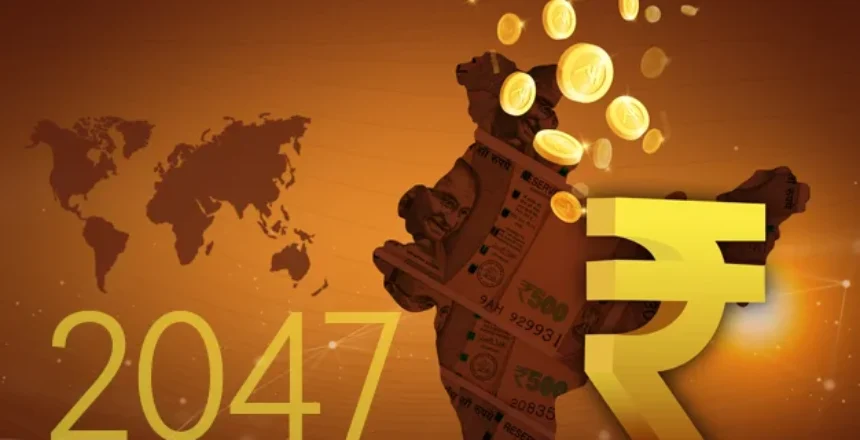Vision 2047 is a long-term plan by NITI Ayog to make India a $30 trillion economy, including a $9 trillion export economy. This ambitious plan has the potential to transform India’s economy and make it a global powerhouse.
The key components of Vision 2047 include economic growth, export promotion, infrastructure development, skilling and education, innovation and entrepreneurship, and sustainable development. Achieving these goals will require significant investments and policy reforms, but the potential benefits for India and the world are immense.
Here is a SWOT analysis of the possibilities of this vision:
Strengths:
- Demographic Dividend: India has a young population, which is expected to be the largest in the world by 2027. This demographic dividend can be leveraged to drive economic growth and development.
- Skilled Workforce: India has a large pool of skilled workers, particularly in the IT and services sectors. This skilled workforce can be harnessed to drive innovation and growth in other sectors as well.
- Natural Resources: India is rich in natural resources, including minerals, oil, and gas. These resources can be used to drive economic growth and development.
- Entrepreneurial Spirit: India has a strong entrepreneurial spirit, with many successful startups and small businesses. This spirit can be harnessed to drive innovation and growth in the economy.
Weaknesses:
- Infrastructure: India’s infrastructure is inadequate to support the growth of a $30 trillion economy. Significant investments will be required to upgrade infrastructure, including roads, ports, airports, and power.
- Education: India’s education system needs significant improvement to produce a skilled workforce that can drive economic growth and development.
- Inequality: India has high levels of inequality, with a large proportion of the population living in poverty. Addressing this inequality will be critical to achieving the goals of Vision 2047.
- Bureaucracy: India’s bureaucracy is often seen as slow and inefficient, which can hinder economic growth and development.
Opportunities:
- Digital Transformation: India has the potential to lead the world in digital transformation, particularly in areas such as e-commerce, fintech, and digital payments.
- Manufacturing: India has the potential to become a global manufacturing hub, particularly in areas such as electronics, automobiles, and textiles.
- Green Energy: India has the potential to become a leader in green energy, particularly in areas such as solar and wind power.
- Globalization: India can leverage its large and growing economy to become a major player in the global economy, particularly in areas such as trade and investment.
Threats:
- Global Economic Uncertainty: The global economy is facing significant uncertainty, particularly in the wake of the COVID-19 pandemic. This uncertainty could impact India’s ability to achieve the goals of Vision 2047.
- Political Instability: India has a history of political instability, which could impact its ability to achieve the goals of Vision 2047.
- Climate Change: Climate change could have significant impacts on India’s economy, particularly in areas such as agriculture and tourism.
- Geopolitical Risks: India faces significant geopolitical risks, particularly in its relations with neighboring countries such as China and Pakistan.
Vision 2047 has the potential to transform India’s economy and make it a global powerhouse. However, significant investments will be required to address weaknesses such as infrastructure and education, and India will need to navigate threats such as global economic uncertainty and geopolitical risks. By leveraging its strengths such as its demographic dividend, skilled workforce, natural resources, and entrepreneurial spirit, India can seize opportunities such as digital transformation, manufacturing, green energy, and globalization to achieve its ambitious goals.


